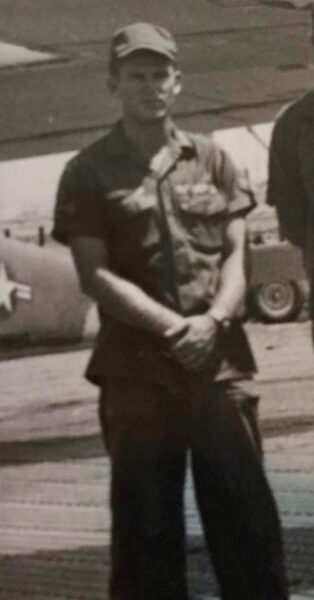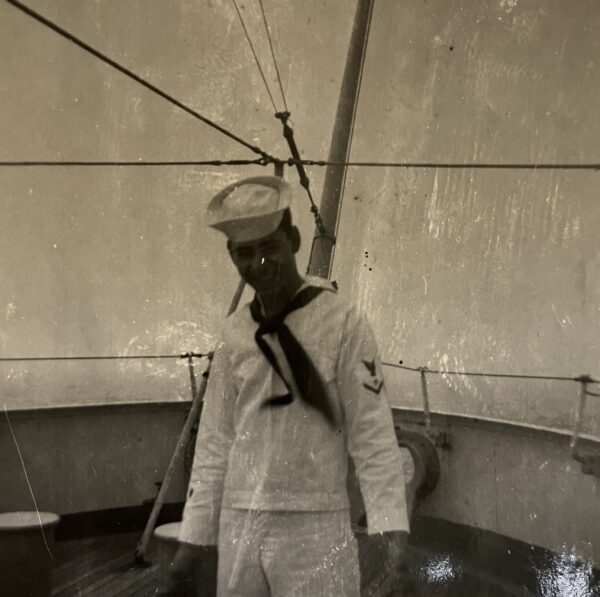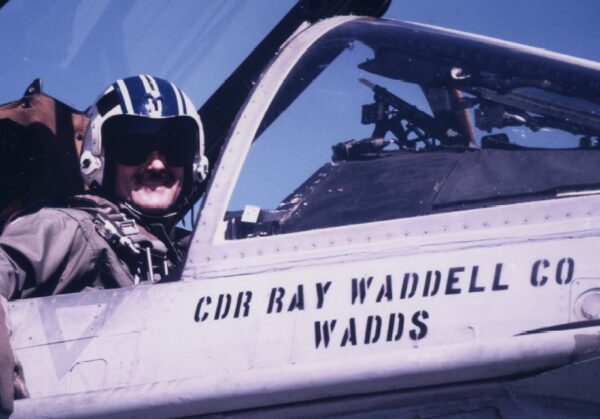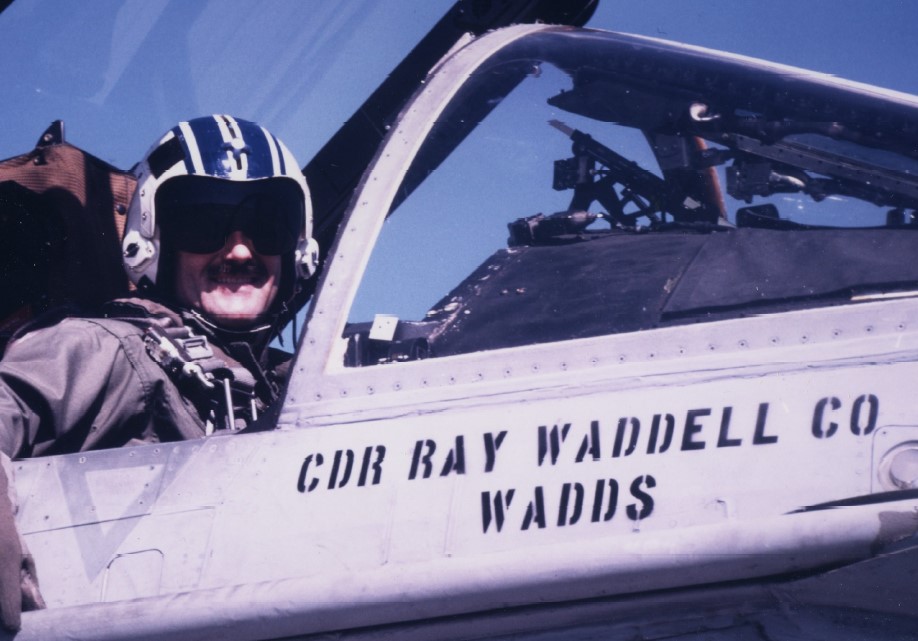By: Sherry Barkas, City of La Quinta
Curtis Thompson was given a “top secret” assignment with the U.S. Air Force Special Forces that sent him out of the country into Vietnam for a year, devastating his mother who didn’t know where he was.
Peter Del Rio wouldn’t take no for an answer when U.S. Coast Guard recruiters told him he wouldn’t make it through basic training because he was too small. He proved them wrong.
Ray Waddell was a fighter pilot with the U.S. Navy, living the dream of an 8-year-old boy who wanted to fly after his father took him to an air show where he saw a F104-Starfighter pilot do a high-performance takeoff straight up into the air.
These three La Quinta residents are a sample of the 21 whose names are being added to the Veterans Acknowledgement Monuments in Civic Center park this year. They will be honored during La Quinta’s annual Veterans Recognition Ceremony on Saturday, November 11, at City Hall.
The ceremony will be held from 9 to 10 a.m. in the City Hall Courtyard and include guest speakers along with presentations by La Quinta’s mayor and City Council members. The ceremony is open to the public. Parking will be available in the north and south lots at City Hall.
 Disappeared Without a Trace
Disappeared Without a Trace
Thompson served four years active duty and two years as a reservist with the United States Air Force, beginning in September 1963. He was 18 when he enlisted as an airplane mechanic and was stationed in Orlando, Florida, assigned to a squadron that flew Helio Couriers.
“The aircraft was very advanced and a tail dragger,” he said. “It could fly anywhere.”
In October 1965, he received notification he had been picked for top secret deployment to Vietnam, but he could not tell anyone or say goodbye to his family. “I just disappeared from the earth and my mom and dad couldn’t find me,” he said.
In Vietnam his group was based at Cam Ranh Bay supporting U.S. Army Special Forces from the air, who were living within the tribes gathering intelligence.
He recalled being on temporary duty (TDY) in Da Nang, sleeping in a tent with an AR-16 at his side, a mosquito net over his cot, and pallets on the floor to keep it dry when it rained, though the rats still got in.
“I can’t tell you the number of times I would wake up and there would be a rat on my face. It never goes away,” Thompson said of the memories of his time in Vietnam, though he hasn’t talked much about his experiences with his wife or three daughters.
In Vietnam, he was exposed to Agent Orange – a blend of herbicides the U.S. military sprayed in the jungles of Vietnam from 1962 to 1971 to remove trees and other foliage the enemy used for coverage. Thompson said the exposure has led to him having cancer and prostate disease.
He was a sergeant when his enlistment was up and he was honorably discharged at McClellan Air Force Base in Sacramento in September 1969.
It was in Sacramento that he met his wife, Renee, who would marry him only if he went to college after the military. He did, using the GI Bill to cover his costs. He graduated from San Jose State University where he received degrees in aeronautics and business administration.
He wanted to be a commercial airline pilot, but with the end of the war those jobs were going to the experienced pilots returning from their military service, Thompson said. A job fair in San Jose led him to a 30-year career with Toyota Motor Sales. After retirement in 2004, the Thompsons moved to La Quinta.
He and Renee have been married for 57 years. She nominated him for recognition by the City, which he said is humbling. “Honoring me on Veterans Day, how do I deserve this?” he said.
 Defying the Naysayers
Defying the Naysayers
From 1958 to 1962, Del Rio was an electronics technician second class in the United States Coast Guard, the underappreciated branch of service, he said, because many don’t realize it is part of the military.
While search and rescue is the Coast Guard’s primary mission, “it is amazing what the Coast Guard is involved in, what it is and what it does,” Del Rio said. During World War II, for example, the Coast Guard manned more than 350 naval ships and participated in D-Day. Del Rio pointed out legendary golfer Arnold Palmer served in the Coast Guard from 1950 to 1953.
Born and raised in New York City, Del Rio enjoyed playing sports but was told he was too small for all but swimming. “I did that well and became captain of the team.”
When considering enlistment in the military, the Coast Guard was his first choice. “I really liked everything I knew about the Coast Guard,” he said.
He met resistance from recruiters because of his size. A recruiter finally agreed to send Del Rio to basic training with the expectation he wouldn’t pass the physical tests.
He was sent to Cape May, New Jersey, where he not only passed, but he grew some during the four-and-a-half months of training, coming out 6 feet tall and weighing 160 pounds, Del Rio said.
After nine months of training as an electronics engineer, Del Rio joined the crew of the USCGC Spencer (WPG-36). During Del Rio’s time aboard the Spencer, the ship was stationed at Staten Island and patrolled along the East Coast, as far as Cuba.
“In those days we didn’t have GPS (global positioning system),” he said. Instead, ships used LORAN (long range navigation), a hyperbolic radio navigation system developed in the United States during World War II.
“Our ship was a huge sender of LORAN signals and reception, so we would go out to the middle of the ocean, halfway to Europe, and we’d be there for 30 days at a time,” he recalled.
“We would be sending the signals out and receiving them and telling ships and planes where they are in the ocean – very important. Plus, we were there in case of emergencies,” Del Rio said.
He was sent to Alameda, California, where he was discharged on May 25, 1962. He and his wife Teresa, who died 3½ years ago, were married 55 years and had two sons.
The training and experience he received in the Coast Guard led to a long career with IBM. Following his retirement, he and Teresa moved to La Quinta in 1997. He has since been involved with various nonprofit organizations, including serving as chairman of the boards for the Coachella Valley Rescue Mission and One Future Coachella Valley.
 Living a Dream
Living a Dream
Waddell was 8 years old when his father took him to an air show at Moffett Field in the California Bay Area town of Mountain View.
“The Blue Angels were flying there. But the thing that really got my attention was one of the airplane’s that flew before the Blue Angles, an F-104 Starfighter … which is basically a flying rocket and the pilot that day did a high-performance takeoff.”
He pulled the nose up and went straight up into the air, Waddell recalled.“I looked at my dad and said, ‘I want to do that’ … and it became my became dream thereafter,” he said. “I’m one of the rare people who got to live my dream.”
Waddell served as a fighter pilot in the U.S. Navy from 1971 to 1979 on active duty, then went on to serve with the Navy Reserve for several more years. He went through flight training in 1972, after receiving his commission, and flew jet training aircraft which at the time were older fighter type aircraft. From there he went through test pilot training and did that for about two years, then went to a fighter squadron and flew off the USS Saratoga aircraft carrier for about two-and-a-half years before leaving active duty.
The Navy fighter jets are similar to the Air Force. He said there are differences in equipment because Navy jets fly off ships, but the missions are comparable to the Air Force.
Being a fighter pilot for the Navy “is always more exciting because you’re flying off an aircraft carrier,” which, he said, “is the best E coupon ride you can have.”
During his years with the Reserve, Waddell was an instructor at the fighter weapons school in Jacksonville, Florida. He later joined a fighter squadron he flew with starting in 1981 and then commanded until 1989 when he retired from the military.
After active-duty service, Waddell flew commercially, and said the civilian side of flying doesn’t compare to being behind the controls of a fighter jet. He moved back to the Bay Area to care for his mother. After her death, he and his wife of 30 years, Linda, moved to La Quinta, drawn to the Coachella Valley by one of their four grown children.
He is uncomfortable being thanked for his service, saying, “That should be reserved for our other veterans or active-duty personnel. I love all our veterans, all those vets who come out on Veterans Day, they get my acclaim.”
SIDE BAR:
The 21 names being added this year to the Veterans Acknowledgement Monuments in Civic Center Park are:
Kenneth McCool, captain, U.S. Air Force, 1966-70
Curtis Thompson, sergeant, U.S. Air Force, 1963-67
James Engle, specialist 5, U.S. Army, 1966-68
Anthony Ramirez, master sergeant, U.S. Army, 1981-2006
James Manuel, specialist, U.S. Army, 2009-2012
Philip La Greca, specialist 4, U.S. Army, 1960-66
William Brogan, specialist 4, U.S. Army, 1957-60
Louis Knappenberger, specialist 4, U.S. Army, 1960-68
Billy Potts, lance corporal, U.S. Marine Corps, 1961-65
Brett Dingerson, sergeant, U.S. Marine Corps, 1971-75
Charles Gallatin, corporal, U.S. Marine Corps, 1966-68
John Kosinski, major, U.S. Marine Corps, 1968-88
Michael Arcieri, sergeant, U.S. Marine Corps, 1985-89
James Webb, private, U.S. Marine Corps, 1956-62
Alan Gibson, lieutenant commander, U.S. Navy, 1975-2002
Gary Burden, chief gunner’s mate, U.S. Navy, 1985-2006
John Parker, cryptologic technician third class, U.S. Navy, 1966-68
Michael Von Scherr, petty officer third class, U.S. Navy, 1989-97
Geoffrey Rowland, seaman, U.S. Navy, 1967-68
Ray Waddell, captain, U.S. Navy, 1971-79
Peter Del Rio, electronics technician 2, U.S. Coast Guard, 1958-62

